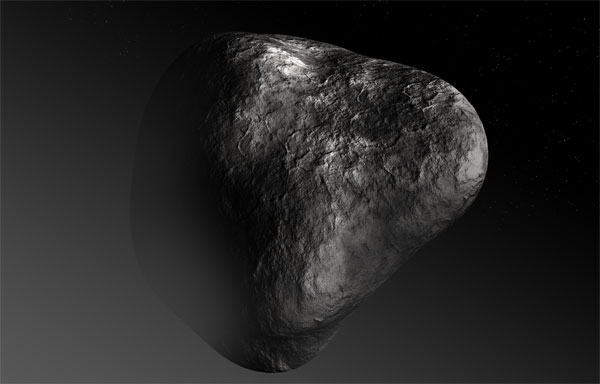First measurement of comet temperature
The European Space Agency's Rosetta cruise ship (ESA) has just conducted a temperature measurement for comet 67P / Churyumov-Gerasimenko, the first time a man-made procedure.
As a result, the comet surface is too hot to be covered with ice, but instead is a very dark and dusty crust, according to Space.com.

Illustration
The observation of comet 67P / Churyumov-Gerasimenko was made possible thanks to the VIRTIS infrared and thermal imaging spectrometer, which took place from July 13 to 21, when Rosetta approached the target with the above distance. 5,000 to 14,000 km.
At this distance, the device's sensor is capable of gathering infrared light emitted from the entire comet, allowing scientists to determine its surface temperature at about 70 degrees Celsius.
At that time, the comet was about 555 million kilometers away from the sun, three times the distance of the Sun - Earth, meaning that the light was only about 1/10.
In fact, the temperature of 70 degrees Celsius was about 20-30 degrees Celsius higher than previously predicted, so comets could not be covered with ice.
Also in the summer of 2014, the history of space exploration recorded a new milestone: for the first time a human device approached a comet and began to study it.
- Why the measured temperature is much higher than the weather forecast
- Video: Comet hit the sun
- Video: The comet moment escapes from the Sun.
- Century comets
- Comet detection is the brightest century
- Comet is brighter than the full moon visiting Earth in 2013
- Comet ISON only has dust left
- China mimics saltwater robots
- The comet of the century will not light
- Comet Lovejoy comet image from all over the world
- The ISON comet can be observed with the naked eye
- Using light emitted from diamond beads, Dr. Vietnamese measured the temperature at nanoscale
 Van Allen's belt and evidence that the Apollo 11 mission to the Moon was myth
Van Allen's belt and evidence that the Apollo 11 mission to the Moon was myth The levels of civilization in the universe (Kardashev scale)
The levels of civilization in the universe (Kardashev scale) Today Mars, the sun and the Earth are aligned
Today Mars, the sun and the Earth are aligned The Amazon owner announced a secret plan to build a space base for thousands of people
The Amazon owner announced a secret plan to build a space base for thousands of people